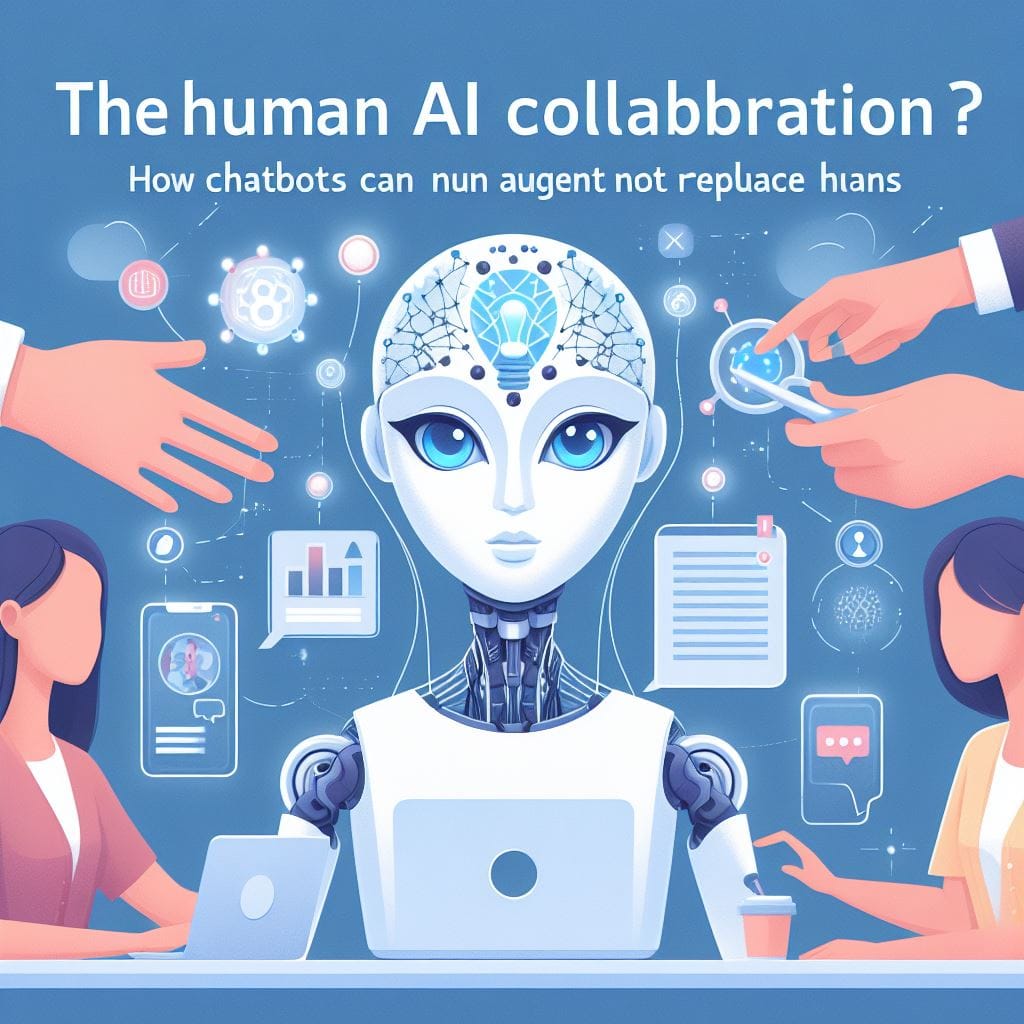The Human-AI Collaboration: How Chatbots Can Augment, Not Replace Humans

The rise of AI chatbots has sparked concerns about automation replacing human jobs. However, the reality is far more nuanced. Chatbots excel at specific tasks, but they lack the human touch, creativity, and complex problem-solving skills essential for many roles. The future lies not in a battle between humans and AI, but in a powerful collaboration – a human-AI partnership where each plays to their strengths.
Why Chatbots Are Not Here to Replace Humans:
- Limited Cognitive Abilities: While chatbots can handle routine tasks and follow clear instructions, they struggle with complex situations that require critical thinking, emotional intelligence, and nuanced understanding.
- Lack of Creativity & Innovation: Chatbots operate within predefined parameters. They cannot generate original ideas or adapt to unforeseen situations in the same way humans can.
- The Human Touch: Empathy, compassion, and the ability to build rapport are crucial for many interactions. Chatbots may struggle to replicate these human qualities, which are essential for building trust and customer satisfaction.
The Power of Human-AI Collaboration:
- Enhanced Efficiency & Productivity: Chatbots can handle repetitive tasks like scheduling appointments, answering FAQs, or collecting basic customer information. This frees up human employees to focus on higher-value activities that require strategic thinking and interpersonal skills.
- Improved Customer Service: Chatbots can provide 24/7 support and handle basic inquiries, while human agents can address complex issues and build stronger customer relationships.
- Data-Driven Decision Making: Chatbots can analyze customer data and identify trends, providing valuable insights that can inform human decision-making and improve overall business strategies.
Building a Successful Human-AI Collaboration:
- Clearly Defined Roles: Clearly define the tasks best handled by chatbots and those that require human expertise. Ensure a seamless handover between chatbot and human agent for complex issues.
- Focus on Human Skills Development: Invest in training and development programs that equip human employees with the skills needed to thrive in a collaborative environment with AI.
- Prioritize User Experience: Design the human-AI interaction to be smooth and user-friendly. Users should feel confident that they can connect with a human agent when necessary.
The Future of Human-AI Collaboration:
The future of work will see humans and AI working together in increasingly sophisticated ways. Here are some exciting possibilities:
- AI-powered Coaching & Guidance: AI can assist human agents by providing real-time coaching, suggesting relevant knowledge base articles, or offering data-driven recommendations during customer interactions.
- Collaborative Problem-Solving: Imagine AI analyzing customer data to identify potential issues, while human agents leverage their expertise to develop creative solutions and personalized support plans.
- Augmented Decision-Making: AI can analyze vast amounts of data to generate insights, but the final decision-making power remains with human experts who can consider the broader context and ethical implications.
Conclusion:
The human-AI collaboration is not a competition; it's a powerful union. By leveraging the strengths of both humans and chatbots, businesses can create a more efficient, productive, and customer-centric work environment.
Ready to explore the potential of human-AI collaboration in your business? Contact us today to discuss how we can help you design and implement a strategy that unlocks the power of this dynamic partnership.
